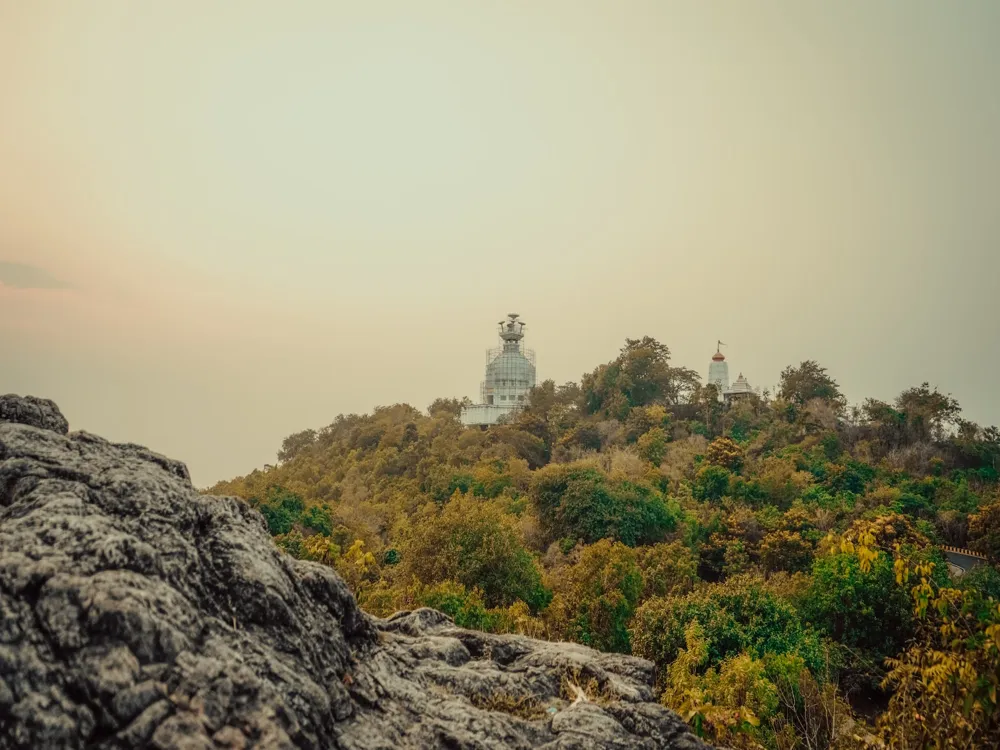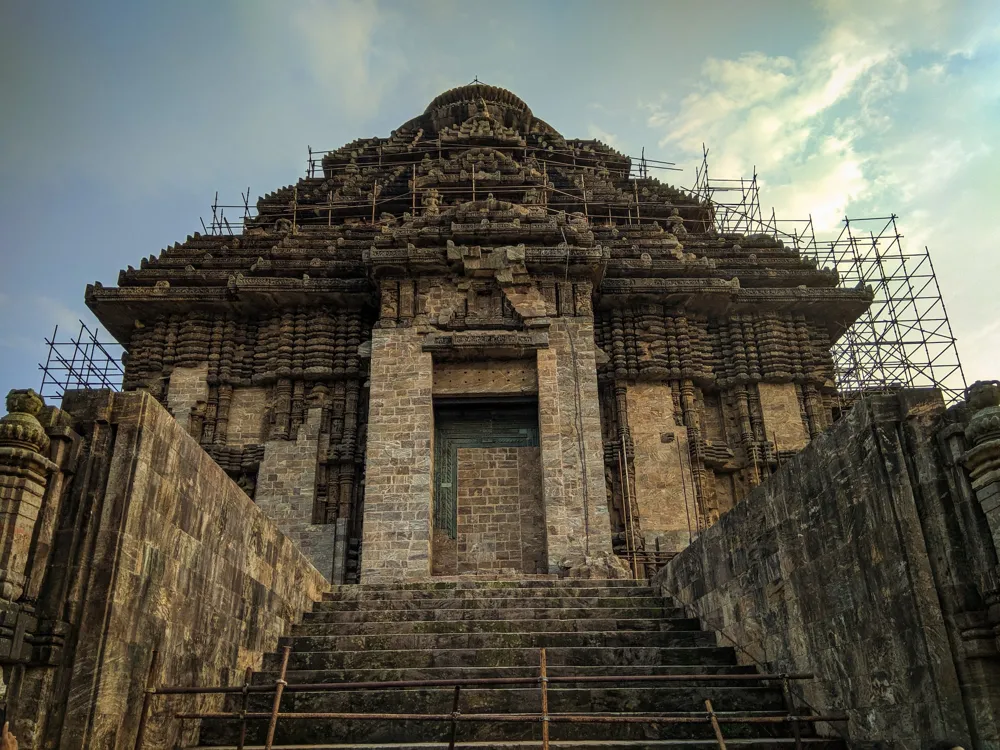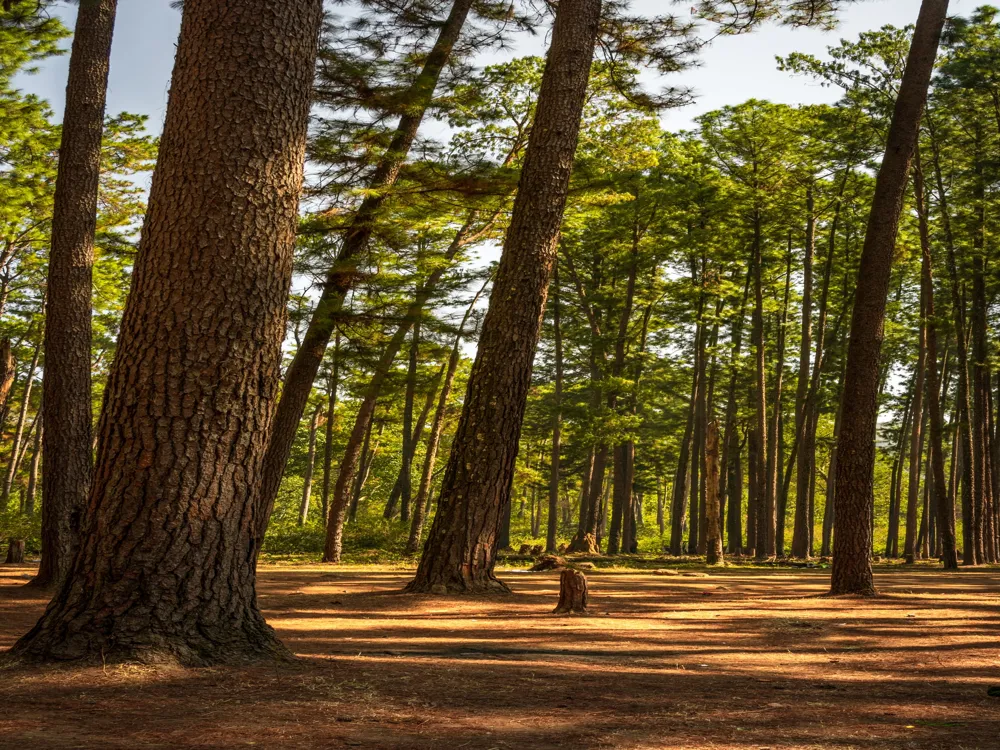Nandankanan Zoological Park, nestled in the splendor of Bhubaneswar, Odisha, is not just a zoo but a haven for wildlife enthusiasts and nature lovers. Spanning over 437 hectares, it's a unique mix of a zoo, botanical garden, and a sanctuary. Established in 1960, this zoological park has become an integral part of Odisha's rich natural heritage, attracting visitors from all over the world. The name 'Nandankanan', literally translating to 'Garden of Heaven', truly lives up to its name. Home to over 1660 individual animals, representing 166 species, including mammals, reptiles, and birds, it's a biodiversity hotspot. What makes Nandankanan unique is its open-top enclosures, allowing animals to live in a natural habitat. One of the park's highlights is its white tiger population, a result of a rare genetic mutation. These magnificent creatures have become synonymous with Nandankanan, attracting significant attention and research interest. The park also takes pride in its successful captive breeding programs, especially for endangered species like the Indian pangolin and gharial. Nandankanan's commitment to conservation extends beyond its enclosures. It plays a vital role in wildlife education, research, and conservation programs, collaborating with various national and international organizations. Its efforts in raising awareness about the importance of biodiversity conservation are commendable. Visitors to Nandankanan are treated to a rich tapestry of experiences. From the captivating white tiger safari to boating in the serene Kanjia Lake, there's something for everyone. The aviaries, with their exotic collection of birds, are a birdwatcher's paradise. The Reptile Park, showcasing a diverse range of reptiles, including the King Cobra, adds another dimension to the wildlife experience. The architectural design of Nandankanan Zoological Park is a testament to the perfect blend of nature and human ingenuity. The park's layout and structure are thoughtfully designed to mimic natural habitats, providing animals with a space that closely resembles their wild environments. This approach not only benefits the animals but also enhances the visitor experience, offering a more authentic and engaging wildlife encounter. The enclosures, constructed with minimalistic yet sturdy materials, ensure safety while allowing unrestricted views of the animals. The use of natural barriers, like moats and trenches, instead of cages, underscores the park's commitment to animal welfare and environmental sustainability. The botanical garden within the park adds a layer of tranquility and aesthetic beauty. This garden, with its collection of indigenous and exotic plants, serves as a vital lung space, enriching the park's ecosystem. The pathways meandering through the garden are designed to offer visitors a serene and intimate connection with nature. The park's infrastructure also includes state-of-the-art facilities for animal healthcare and research. The veterinary hospital and research center are equipped with modern medical equipment and staffed by a team of dedicated professionals, ensuring the best care for the park's inhabitants. Another noteworthy aspect is the park's use of renewable energy sources and water conservation methods. These initiatives reflect Nandankanan's commitment to sustainability and its role as a leader in environmental stewardship. While Nandankanan is open throughout the year, the best time to visit is from October to March when the weather is pleasant, making wildlife viewing more enjoyable. Opt for guided tours or safaris for an informed and enriching experience. The guides are knowledgeable and provide fascinating insights about the animals and the park's history. For photography enthusiasts, the natural lighting in the early mornings or late afternoons offers the best conditions for capturing stunning wildlife photos. Carry water bottles, hats, and sunscreen, as it can get quite sunny during the day. Staying hydrated and protected is crucial for a comfortable visit. Adhere to the park rules, including not feeding or disturbing the animals, to ensure a safe and respectful environment for both visitors and wildlife. Nandankanan Zoological Park is easily accessible by various modes of transport. The nearest airport is Biju Patnaik International Airport, Bhubaneswar, located about 20 km away. From the airport, one can hire a taxi or use public transport to reach the park. Bhubaneswar Railway Station, about 15 km away, is the nearest railhead, well-connected to major Indian cities. Regular bus services and taxis are available from the railway station to the park. For those driving, Nandankanan is well-connected through state and national highways, ensuring a smooth journey. Read More:Overview of Nandankanan Zoological Park in Bhubaneswar, Odisha
Architecture of Nandankanan Zoological Park
Tips When Visiting Nandankanan Zoological Park
Best Time to Visit
Guided Tours and Safaris
Photography Tips
Stay Hydrated and Protected
Follow Park Rules
How To Reach Nandankanan Zoological Park
Nandankanan Zoological Park
Bhubaneswar
Odisha
NaN onwards
View bhubaneswar Packages
Bhubaneswar Travel Packages
View All Packages For Bhubaneswar
Top Hotel Collections for Bhubaneswar

Private Pool

Luxury Hotels

5-Star Hotels

Pet Friendly
Top Hotels Near Bhubaneswar
Other Top Ranking Places In Bhubaneswar
View All Places To Visit In bhubaneswar
View bhubaneswar Packages
Bhubaneswar Travel Packages
View All Packages For Bhubaneswar
Top Hotel Collections for Bhubaneswar

Private Pool

Luxury Hotels

5-Star Hotels

Pet Friendly






















